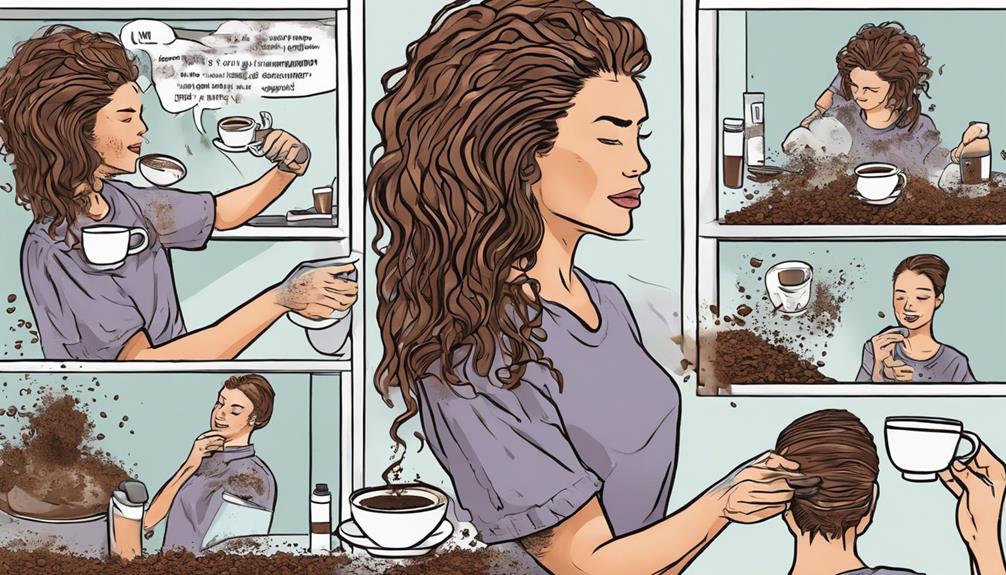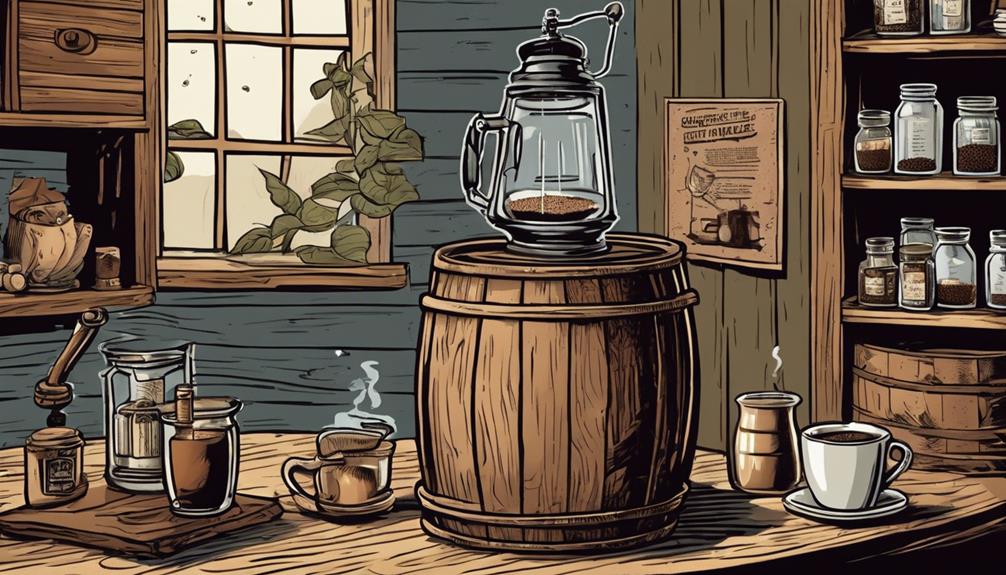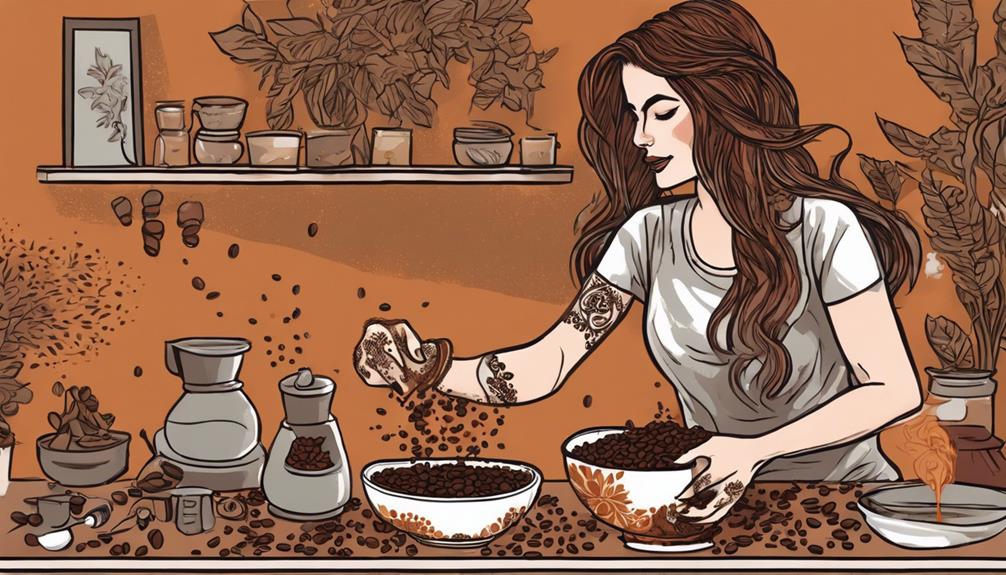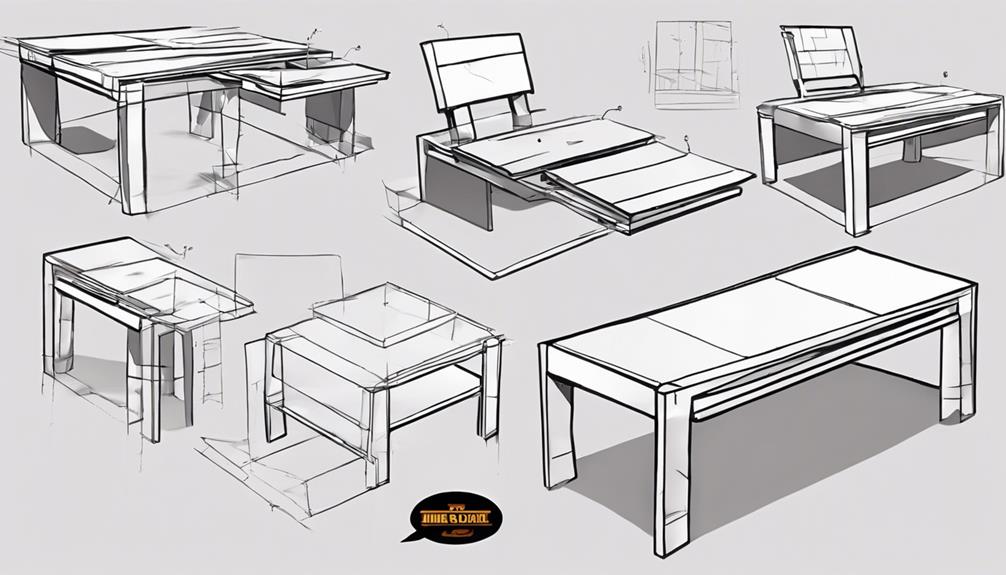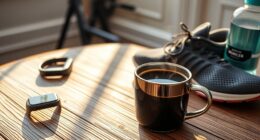Boost hair growth and shine with the help of coffee! Whether you choose to create your own DIY treatments or purchase coffee-infused products, the possibilities are endless. Consider trying coffee rinses and masks for added nourishment, or opt for coffee scalp scrubs to boost blood flow. You can even mix brewed coffee with olive oil for added strength and shine while potentially darkening grays. Embrace the benefits of caffeine for improved hair health and growth, but remember to be cautious of any potential allergic reactions or scalp burns. If you have lighter or color-treated hair, proceed with care. Discover more ways to enhance your hair care routine by incorporating coffee for maximum benefits.
Key Takeaways
- Brew coffee, let it cool, apply to wet hair for 20 minutes to boost growth.
- Create a coffee mask with honey for deep nourishment and scalp stimulation.
- Use coffee oil or caffeine-infused hair products to enhance hair care routine.
- Apply brewed coffee as a rinse to promote growth, shine, and overall hair health.
- Cooling brewed coffee before application prevents scalp burns and maximizes benefits.
Coffee For Hair Growth
Indulging in a coffee hair treatment can boost hair growth significantly due to the stimulating effects of caffeine on your hair follicles. The caffeine in coffee has the remarkable ability to enhance blood circulation to the scalp, which in turn promotes hair growth.
By applying a coffee-infused hair growth serum, you can stimulate hair follicles, reduce hair loss, and encourage the growth of new, healthy strands.
Caffeine not only promotes blood flow but also helps maintain collagen in hair follicles, extending the hair's life cycle. Additionally, the antioxidants present in coffee combat the damaging effects of free radicals on your hair, keeping it healthier and shinier.
Scientific evidence supports caffeine's efficacy in promoting hair growth and thickness, making it a valuable ingredient in your hair care routine.
Regular use of coffee for hair can result in softer, shinier locks that exude energy and health. By incorporating coffee into your hair care regimen, you can enjoy the benefits of stronger, more resilient hair.
Benefits Of Coffee For Hair
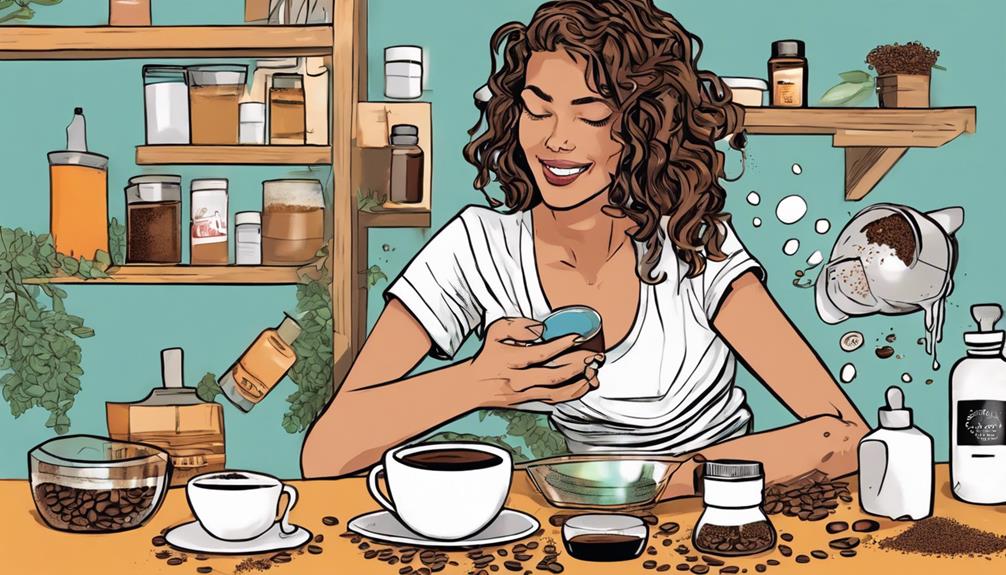
Enhance the health and appearance of your hair by harnessing the numerous benefits of coffee. Coffee offers a range of advantages for your hair, from stimulating growth to enhancing softness and shine.
Here are some key benefits of using coffee for your hair:
- Stimulating Hair Growth: Coffee promotes blood flow to the hair follicles, encouraging hair growth and reducing the risk of hair loss.
- Increasing Softness: The caffeine in coffee strengthens the hair, speeds up growth, and increases softness, making your hair more manageable and less dull.
- Retaining Moisture and Darkening Grey Hair: Coffee helps retain moisture in the hair, adding shine and can even darken grey hair by staining it subtly.
How To Use Coffee For Hair Growth
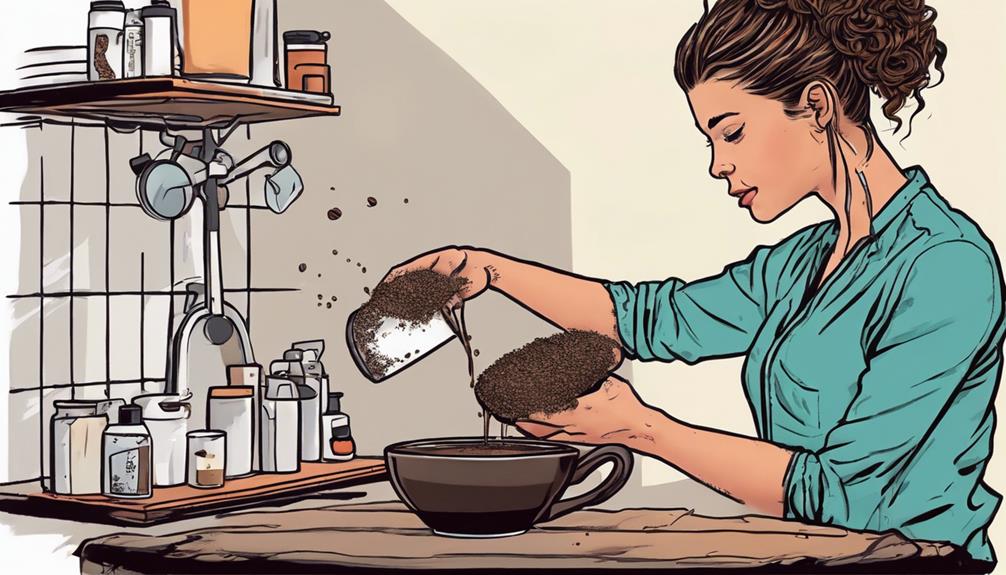
To use coffee for hair growth, you can create DIY treatments at home or look for hair products containing coffee. Traditional remedies like coffee rinses or masks can provide nourishment and promote hair growth.
Scientific evidence supports the benefits of caffeine in coffee for strengthening hair strands and encouraging healthier hair growth.
Benefits of Coffee
Boost your hair growth and enhance its strength by harnessing the benefits of coffee through simple and effective methods.
When using coffee on your hair, you can experience a range of advantages that contribute to healthier and more vibrant hair.
Here are some key benefits of incorporating coffee into your hair care routine:
- Stimulates Hair Growth: The caffeine in coffee can stimulate hair follicles, encouraging hair growth and improving overall hair health.
- Enhances Blood Flow: Coffee helps to increase blood flow to the scalp, which in turn nourishes hair follicles and strengthens hair from the roots.
- Reduces Hair Damage: By using coffee-infused products or DIY treatments, you can reduce hair damage, retain moisture, and achieve softer, shinier hair.
Traditional Remedies
In traditional hair care practices, utilizing brewed coffee for hair growth has been a long-standing remedy known for its effectiveness in promoting healthier and stronger hair. Mixing brewed coffee with olive oil creates a potent hair strengthening treatment that nourishes and revitalizes the hair from root to tip.
Additionally, coffee scalp scrubs are used to stimulate the scalp, enhancing blood circulation which is essential for healthier hair growth.
Moreover, applying brewed coffee to your hair can help naturally darken grays while sealing in moisture and adding a beautiful shine to your locks. These traditional remedies highlight the power of natural ingredients in enhancing hair growth and overall hair health.
Scientific Evidence
Considering the scientific evidence supporting the benefits of using coffee for hair growth, it becomes apparent that incorporating this natural ingredient into your hair care routine can lead to significant improvements in hair health.
The caffeine present in coffee promotes hair growth by stimulating blood circulation in the scalp, which can result in faster hair growth. Additionally, coffee has been found to block the effects of DHT in male hair follicles, potentially preventing hair loss and promoting thicker hair.
Besides, the antioxidants in coffee play an essential role in maintaining collagen in hair follicles, extending the life cycle of your hair and improving overall hair health. By regularly using coffee for hair care, you can potentially experience benefits such as hair shaft elongation, faster hair growth, and enhanced hair health.
Precautions When Using Coffee For Hair
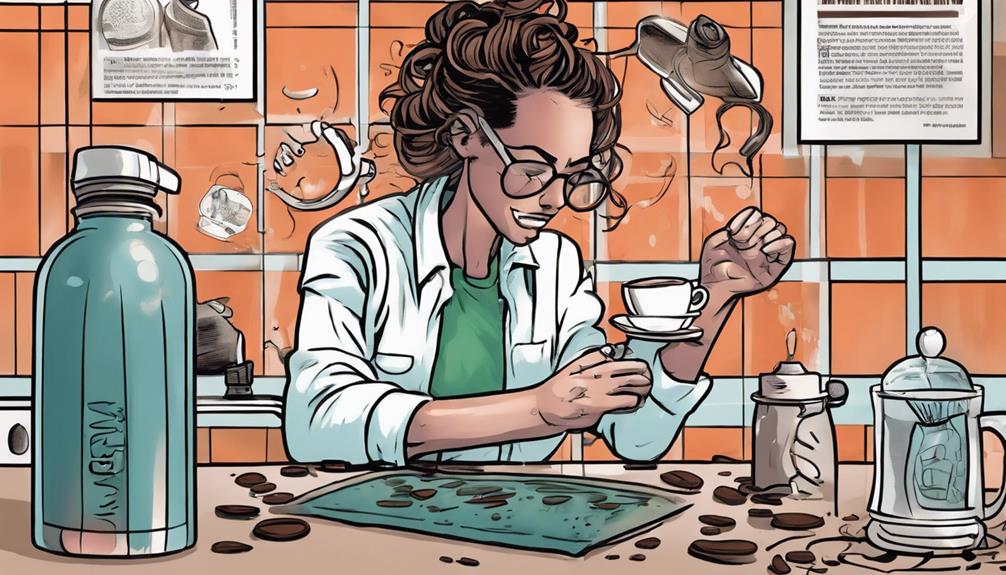
When using coffee for your hair, it's important to watch out for any signs of allergic reactions.
Remember to avoid hot coffee rinses to prevent scalp burns.
Stay cautious, especially if you have lighter or color-treated hair, to prevent any unexpected outcomes.
Allergic Reactions Warning
For those incorporating coffee into their hair care routine, it's important to be aware of potential allergic reactions as a precautionary measure. When using coffee for hair treatments, consider the following:
- Opt for unflavored coffee in hair masks to maintain its potency and minimize the risk of allergies.
- Avoid using hot coffee directly on your hair; instead, use powdered coffee in hair masks for a safer application.
- Be vigilant for any signs of allergic reactions, such as itching, redness, or swelling. If you experience any of these symptoms, discontinue use immediately and consult a healthcare professional for further guidance.
Prioritize safety and skin sensitivity when experimenting with coffee-infused hair treatments to prevent adverse reactions. Remember, your health and well-being come first in any beauty regimen.
Coffee Temperature Precautions
Wondering about the significance of temperature control when incorporating coffee into your hair care routine?
It's important to be cautious with the temperature of the coffee you use for your hair treatments. Avoid using hot coffee directly on your scalp to prevent scalp burns and discomfort. Instead, opt for powdered coffee in masks to maintain the potency of the treatment without risking heat-related issues. Additionally, make sure that the coffee you use is unflavored to fully reap its benefits without any unnecessary additives that could potentially irritate your scalp.
Cooling brewed coffee before applying it to your hair is a must-do step to prevent any potential scalp burns and discomfort.
If you experience any allergic reactions while using coffee for your hair treatments, discontinue use immediately and consult a healthcare professional.
Effects Of Caffeine On Hair
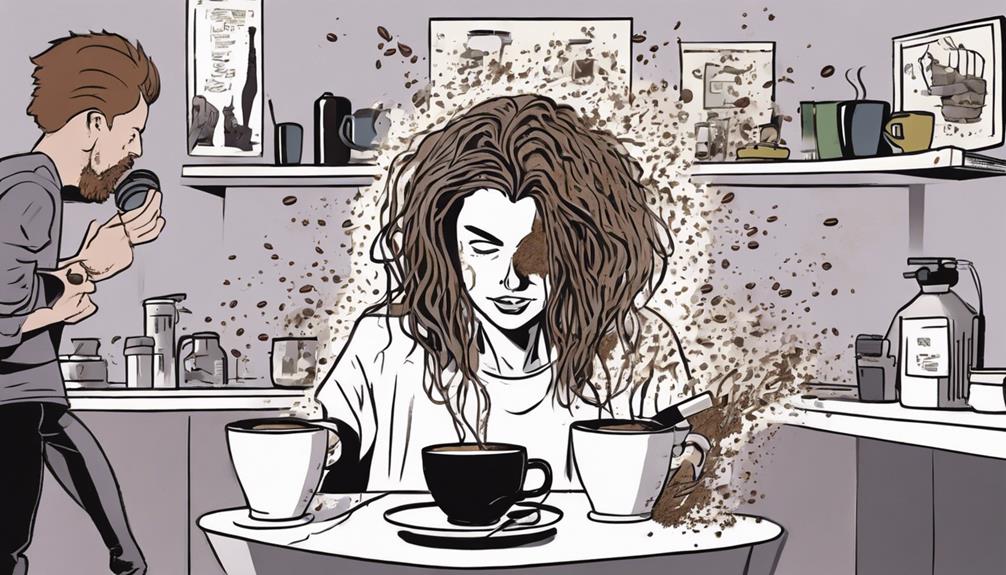
By stimulating blood flow to the hair follicles, caffeine promotes hair growth and improves texture. Caffeine acts as a stimulant, boosting circulation and delivering essential nutrients to the hair follicles, resulting in stronger and healthier strands.
Here are some key effects of caffeine on hair:
- Accelerates Hair Growth: Caffeine blocks the effects of DHT, a hormone that can shrink hair follicles, thereby promoting faster hair growth.
- Improves Hair Texture: Regular use of caffeine can lead to thicker and healthier hair shafts, enhancing the overall texture of your hair.
- Aids in Regrowing Hair: Scientific studies from 2007 have supported the positive effects of caffeine on hair growth, making it a valuable ingredient in products aimed at regrowing hair and nourishing strands.
Incorporating caffeine into your hair care routine through coffee shampoos or treatments can help you achieve luscious locks and maintain a healthy scalp.
Other Natural Ingredients For Hair Care
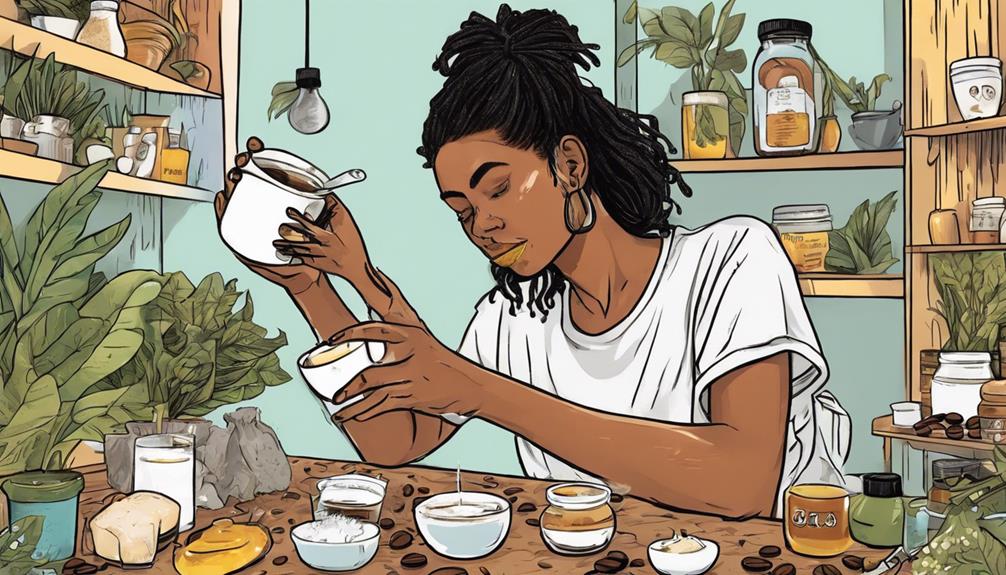
Enhancing your hair care routine with other natural ingredients can provide a nourishing boost to your hair health and appearance. Incorporating ingredients like Multani mitti, banana, rice water, olive oil, and mustard oil can significantly improve hair growth, enhance shine, provide conditioning, and maintain scalp health. Here's a breakdown of the benefits of each natural ingredient in a convenient table:
| Natural Ingredient | Benefits |
|---|---|
| Multani Mitti | Controls sebum production, conditions hair, strengthens hair roots naturally |
| Banana | Rich in nutrients for repairing damaged hair, reducing frizz, promoting healthy hair growth |
| Rice Water | Contains vitamins and minerals to smooth hair, fight frizz, accelerate hair growth |
| Olive Oil | Prevents hair loss, repairs split ends, maintains scalp health |
| Mustard Oil | Improves hair growth, conditions dry hair, promotes overall hair health |
Integrating these natural ingredients into your hair care routine can lead to healthier, shinier, and stronger hair.
Adding Coffee To Your Hair Care Routine
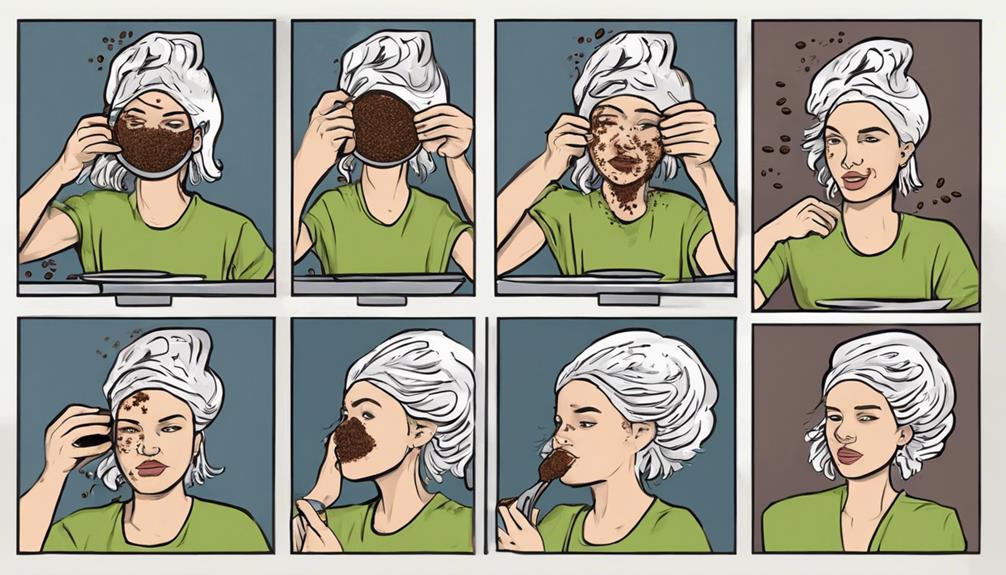
Consider integrating coffee into your hair care routine for improved growth and shine. Using coffee as a rinse can boost hair growth and shine. Simply spray brewed coffee on wet hair, leave it on for 20 minutes, then rinse out.
For a deeper nourishing treatment and scalp stimulation, create a coffee mask by mixing coffee grounds with honey. Additionally, incorporating coffee oil or opting for caffeine-infused hair care products can further enhance your hair care routine.
Remember to cool brewed coffee before application to prevent scalp burns and maximize its benefits. Be cautious with instant or flavored coffees, especially if you have lighter or color-treated hair, to achieve optimal results.
Frequently Asked Questions
How to Apply Coffee on Hair for Hair Growth?
To apply coffee on hair for growth, brew coffee, let it cool, pour it over your hair, massage gently, leave for 20 minutes, rinse with water, then shampoo. Regular use can boost circulation, strengthen hair, and add shine. If you want to really maximize the benefits of using coffee for hair growth, try brewing extra strong coffee. The higher concentration of caffeine in the coffee can help stimulate hair follicles and promote growth. Additionally, the antioxidants in coffee can help protect the hair and scalp from damage.
Does Coffee Make Your Hair Shiny?
Coffee does make your hair shiny! Its antioxidants add moisture and improve texture, creating a glossy look. The acidic pH levels smooth hair cuticles, restoring shine. Regular use enhances overall shine, leaving your hair healthier and radiant.
How Often Should I Put Coffee in My Hair?
You should put coffee in your hair 1-2 times per week for best results. Consistent use can enhance growth and shine. Be mindful of overuse, which may cause dryness and damage. Adjust frequency based on your hair's reaction.
Which Coffee Is Best for Hair Growth and Thickness?
For best hair growth and thickness, choose dark roast coffee with high caffeine content. Ground espresso or strong brews work best. Steer clear of instant or decaf varieties. Quality beans with rich flavors enhance hair health.
Conclusion
Coffee isn't just for waking you up in the morning, it can also work wonders for your hair. Just like how a cup of coffee gives you a boost of energy, applying coffee to your hair can give it a boost of growth and shine.
So why not add this simple and natural ingredient to your hair care routine and see the amazing results for yourself? Your hair will thank you!
